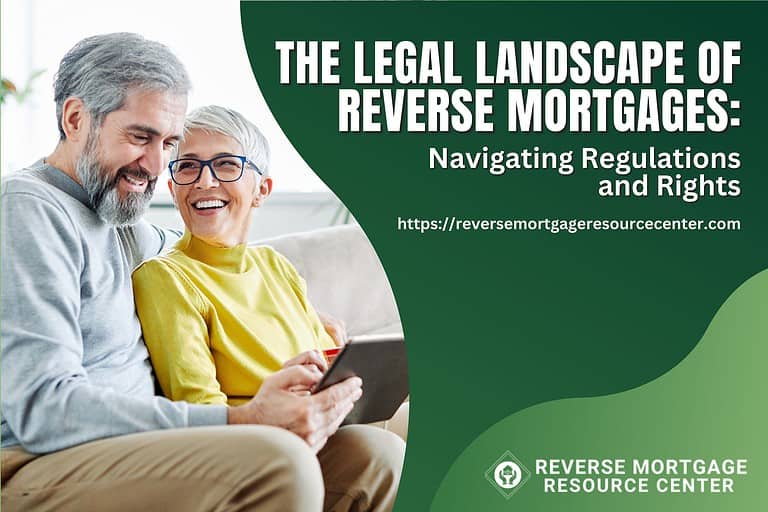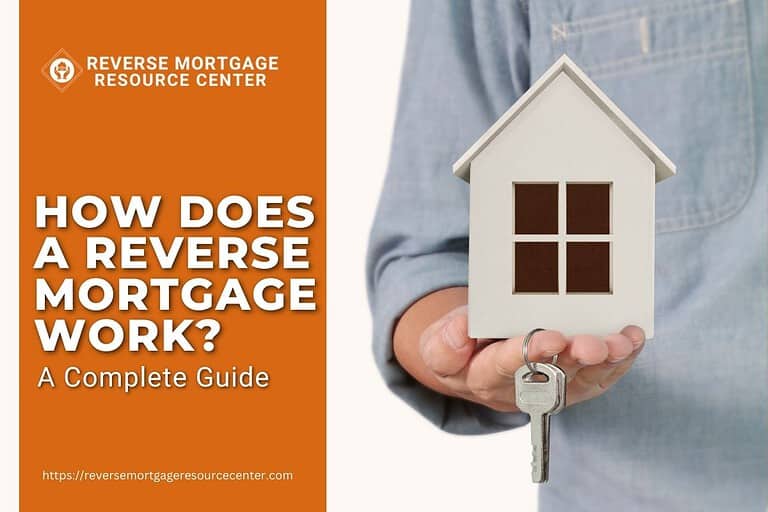How To Protect Your Heirs’ Inheritance With A Reverse Mortgage Loan
Reverse mortgages have risen in popularity in recent years because they allow older homeowners to access additional funds while remaining in the comfort and security of their homes. However, because these loans must eventually be repaid, borrowers and their families must thoroughly grasp the repayment process. This article will explore common loan payback triggers, accessible means for completing this responsibility, and suggestions for navigating Utah’s often challenging repayment procedure.
The desire for financial mastery is an innate feature of human nature; hence, learning how to efficiently handle and repay a reverse mortgage loan can be advantageous not just in terms of practical application but also in nurturing peace of mind. This post aims to provide readers with valuable insights by dissecting key aspects such as understanding reverse mortgage basics, identifying triggers that necessitate loan repayment, exploring various repayment options, and discussing strategies for avoiding potential pitfalls associated with these loans.
Understanding Reverse Mortgage Loans
Understanding the complexities of reverse mortgage loans is critical to protect one’s financial legacy for one’s grandchildren. A reverse mortgage loan is a financial tool that allows homeowners aged 62 and up to turn a portion of their home equity into readily accessible funds without selling their home or making monthly payments. This form of loan can be used as a complement to social security benefits and other sources of income during retirement. However, while it allows financial flexibility throughout one’s lifetime, it also has inheritance ramifications if not managed carefully.
Instead of making regular payments to reduce the outstanding debt over time, the balance of a reverse mortgage loan increases as more funds are pulled from the available line of credit, and accruing interest. When the borrower passes away, sells the property, or permanently moves out, the loan becomes due. Any leftover equity after repayment of the reverse mortgage is available for the owner(s) or heirs. If there isn’t enough equity in the property or market conditions have diminished its worth, inheritance may be jeopardized.
A well-executed estate plan can be critical in conserving one’s inheritance while ensuring access to essential funds during one’s lifetime via a reverse mortgage loan. Setting up a trust, for example, with precise rules for repayment and distribution among beneficiaries might provide unambiguous direction on how assets should be distributed upon death. Additionally, heirs who want to keep real estate in the family could look into refinancing options for repaying any outstanding reverse mortgage balances without selling inherited properties outright, preserving ownership and control over valuable family homes while responsibly settling associated debts. Understanding these mechanisms and properly planning for them would help preserve future generations’ inheritances from being harmed by reverse mortgage loans accepted today.
Benefits of a Reverse Mortgage Loan for Retirees
One cannot place an old head on young shoulders. Therefore, knowing the benefits of a reverse mortgage loan for retirees is critical in protecting future generations’ financial legacy. A reverse mortgage loan offers various advantages that can assist seniors in maintaining a comfortable lifestyle while protecting their heirs’ inheritance. These loans provide financial flexibility by allowing homeowners to access their home equity without selling the home or making monthly payments.
Reverse mortgage funds can be utilized for a variety of things, including:
- Increasing access to funds
- Repaying existing obligations
- Paying for medical expenses
- Making house changes or enhancements for aging in place
Reverse mortgage loans include measures to protect borrowers and their successors, such as:
- Non-recourse feature: Borrowers are not directly accountable for repaying more than the current market worth of their property.
- Loan repayment deferral: Borrowers are not required to begin repaying the loan until they leave or sell the property permanently.
Retirees can improve their quality of life while saving some wealth for future generations by carefully managing the funds drawn on a reverse mortgage loan. Proper planning is needed when considering this financial tool because it includes borrowing against one’s most valuable asset – the family house. Furthermore, seeking professional assistance and researching available possibilities will ensure that retirees and their heirs benefit from this one-of-a-kind financial offering. Thus, investigating the benefits of a reverse mortgage loan provides retirees with a way to meet immediate needs while preserving resources for future generations.
Preserving Your Heirs’ Inheritance
Careful planning and discussion with family members are essential for securing an inheritance using a reverse mortgage. First, ensuring that the reverse mortgage proceeds are handled properly will ensure that assets are left for heirs after paying off any lingering loan balance. This can involve using loan funds for required expenses such as healthcare, house maintenance, or other necessities rather than luxury purchases. Furthermore, setting explicit expectations with heirs about what they might expect from their possible inheritance will help to avoid misunderstandings and disappointment later on.
Another key factor to consider when preserving an inheritance with a reverse mortgage is picking a suitable repayment plan when the loan matures or when the homeowner passes or moves out permanently from the dwelling. There are typically three options: selling the home and using the revenues to settle the loan, refinancing into a standard forward mortgage, or allowing heirs to pay down the remaining balance using other assets if available. Homeowners can make informed decisions that align best with their goals for leaving a lasting legacy while maintaining financial security throughout retirement years by carefully analyzing each option based on individual circumstances and discussing them with family members involved in estate planning processes.
Potential Drawbacks and Considerations
While a reverse mortgage can provide various advantages for retirees, assessing the potential disadvantages and concerns is critical before incorporating this financial strategy into one’s estate planning. A reverse mortgage can offer seniors an additional source of readily accessible funds by allowing them to access the equity they have built up in their house over time. However, there are other variables that people should examine before deciding if a reverse mortgage is right for them.
1. Impact on Heirs: One of the biggest worries about reverse mortgages is how they may affect the inheritance left to heirs because heirs may receive much less than expected from their inheritance because a portion or all of the home’s worth will be used to pay off the loan obligation.
2. Loan Costs and Fees: Reverse mortgages frequently have greater expenses and fees than standard mortgages, which can reduce a homeowner’s residual value.
3. Reduced Government Benefits: Obtaining a reverse mortgage may affect eligibility for government assistance programs such as Medicaid or Supplemental Security Income (SSI), depending on an individual’s financial situation.
4. Homeownership Responsibilities: Borrowers must continue to pay property taxes, insurance payments, and other homeownership-related expenditures; failure to do so may result in loan default and foreclosure.
Understanding these potential disadvantages is critical in assessing if a reverse mortgage is compatible with one’s estate planning objectives and desired legacy for heirs. When contemplating such possibilities, contacting financial and legal authorities is best. Retirees can make informed judgments about how to best protect their descendants’ inheritance while fulfilling their requirements during retirement by carefully analyzing both the benefits and dangers of this type of borrowing against home equity. Overall, smart planning and experienced advice may help guarantee that possible difficulties are effectively reduced or avoided, ensuring current financial security and a lasting legacy for future generations.
How to Get a Reverse Mortgage Loan
Navigating the application procedure for this one-of-a-kind financial tool necessitates careful planning and comprehension of the stages involved. The first step in qualifying for a reverse mortgage loan is determining eligibility, mostly by age, property ownership, and house valuation. Applicants must be at least 62 years old, own their house outright or have a modest remaining mortgage balance that may be paid off with reverse mortgage earnings, and occupy the property as their principal residence to qualify. Furthermore, some properties, such as cooperative housing units and some mobile homes, may not be eligible for a reverse mortgage loan.
The following step in applying for a reverse mortgage loan is to receive mandated counseling from an independent third-party organization that the U.S. HUD has approved stands for Housing and Urban Development. This counseling session seeks to present potential borrowers with important information about reverse mortgages, such as costs, alternatives, and repayment requirements, and to eventually assist them in determining whether it is a good financial decision for their position. During these meetings, counselors will also analyze potential difficulties regarding heirs’ inheritance protection.
After determining eligibility and completing mandatory counseling, applicants must select one of several types of reverse mortgages available, such as Home Equity Conversion Mortgages (HECMs), proprietary reverse mortgages, or single-purpose reverse mortgages, each with different terms and conditions based on individual needs. Before making a final decision, it is critical to carefully analyze possibilities by examining costs associated with each type of loan and other considerations such as interest rates and disbursement methods. Following the selection of an appropriate type of reverse mortgage loan that best suits one’s financial goals while ensuring heirs’ inheritance protection remains intact throughout its duration, proper documentation processes, including appraisals, follow before finally obtaining approval from chosen lender institutions subject to underwriting guidelines fulfillment where disbursement begins according to agreed-upon parameters between parties involved.
Frequently Asked Questions
What happens if the homeowner requires long-term care or placement in a nursing home?
When a homeowner with a reverse mortgage loan wants to move into a long-term care facility or nursing home, navigating the maze of financial intricacies can be overwhelming; nonetheless, understanding the ramifications and potential outcomes becomes critical. The reverse mortgage becomes due and payable when the last borrowing homeowner vacates the home for more than 12 consecutive months due to relocation to such facilities. As a result, the property may be sold or other financial resources used to settle the remaining loan sum, thereby affecting inheritance planning for heirs. Homeowners can design strategies that protect their assets while equitably addressing future care requirements by examining potential scenarios and considering available solutions, such as refinancing or acquiring long-term care insurance.
Will a reverse mortgage loan impact my eligibility for government assistance programs such as Medicaid or Supplemental Security Income (SSI)?
A reverse mortgage loan may influence eligibility for government assistance programs like Medicaid and Supplemental Security Income (SSI) due to these programs’ income and asset limits. When a homeowner acquires funds from a reverse mortgage loan, evaluating how government authorities may perceive these funds is critical. While some disbursements, such as monthly annuity payments or the unused portion of a line of credit, may not influence eligibility for benefits, lump-sum payments or unused earnings from the line of credit may be deemed accessible assets. As a result, exceeding the resource limits established by these programs may result in the loss of benefits or ineligibility. To preserve compliance and avoid risking access to critical aid, homeowners seeking financial assistance through such programs must speak with specialists about their unique situation.
Can a homeowner be forced to sell or leave their house if the reverse mortgage loan total exceeds the value of the residence?
If the balance of a reverse mortgage loan exceeds the home’s value, homeowners are not required to sell or abandon the premises. Reverse mortgages adhere to the non-recourse lending idea, which shields borrowers from liability for any difference between the outstanding loan balance and the home’s selling gains. Lenders primarily recover repayment by selling the property after the homeowners have permanently left or passed away. As a result, homeowners and heirs are protected from personal culpability as long as they follow contractual agreements and loan terms.
Are there any tax ramifications for the homeowner or their heirs while receiving or repaying the reverse mortgage loan funds?
The tax ramifications of reverse mortgage loan funding and repayment for homeowners and their heirs must be carefully considered. In general, reverse mortgage disbursements are not considered income and do not often result in income tax responsibilities. Similarly, interest on such loans is not tax deductible until it is paid, which normally happens when the loan is repaid, or the property is sold. If an heir inherits a home with an outstanding reverse mortgage balance, the repayment process may include selling the property; in this instance, capital gains taxes may apply if the property’s value has increased sufficiently since the acquisition. However, depending on particular circumstances and tax rules at the time, some exemptions and exclusions may apply. It is strongly advised to consult with a certified tax specialist to ensure compliance with all applicable legislation and to optimize financial outcomes for both homeowners and their heirs in reverse mortgage transactions.
Can a homeowner with a regular mortgage or a home equity loan qualify for a reverse mortgage loan, and how do these loans interact?
Subject to specific restrictions, homeowners with existing traditional mortgages or home equity loans may still qualify for a reverse mortgage loan. The funds from a reverse mortgage loan must first be used to pay off any outstanding debts related to the property, such as the balance on a regular mortgage or home equity loan. This assures that the reverse mortgage becomes the dominant lien on the property, allowing homeowners to access their residual home equity via the different disbursement alternatives provided by reverse mortgage programs. While combining these financial tools can benefit qualifying borrowers significantly, it reduces reverse mortgage earnings available due to earlier debt payback obligations.
REVERSE MORTGAGE RESOURCE CENTER ~LIVE LIFE ON YOUR TERMS~
Our Lending Team has been serving our clients since 2004. We are passionate about serving our clients with integrity to help them achieve their financial goals.







